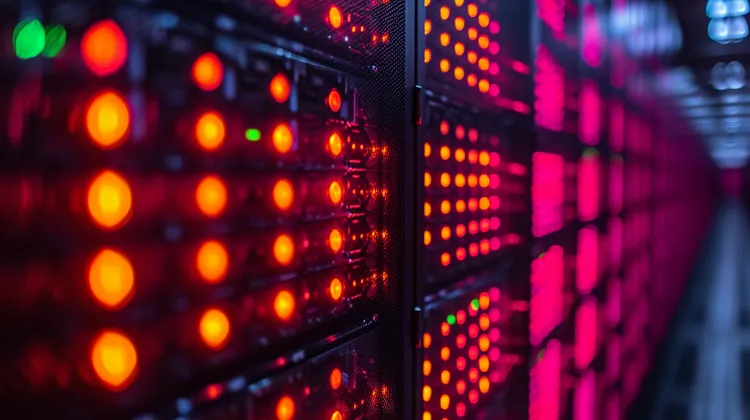
Understanding Bitcoin Hash Rate Significance
The decentralized ecosystem of Bitcoin is underpinned by a remarkable piece of technology known as the blockchain. This blockchain is secured and powered by a global network of computers (or nodes) that engage in a process called mining. The security of the Bitcoin network hinges on a critical metric known as the hash rate. But what exactly is the hash rate and why does it play such an essential role in the network’s operations?
The hash rate, Is a measure of the computational power per second used by Bitcoin miners to process transactions and secure the network. It is quantified in hashes per second (h/s), and higher rates indicate greater network security and mining power. Every transaction on the Bitcoin network is capped within a “block” that miners work to validate and add to the blockchain through a proof-of-work process.
The proof-of-work process is a cryptographic puzzle that requires miners to find a hash that is below a specific target set by the network. Miners use powerful hardware, such as ASIC miners, to rapidly generate millions of guesses per second. When a miner successfully discovers a valid hash, they earn the right to add the new block to the blockchain and are rewarded with newly minted bitcoins known as the block reward.
The hash rate is thus a representation of the collective mining effort and an indirect measure of network health. When the hash rate is high, it indicates that a large number of miners are actively participating in the network. This diversity and number of participants make it increasingly challenging for any single entity to gain control over the majority of the mining power, which would be necessary to attempt a 51% attack. Such an attack would allow the entity to double-spend coins and potentially disrupt the network.
The hash rate is a sign of the security of the network. The more hashing power there is, the more computational effort is required to compromise the blockchain. In essence, a higher hash rate means that it’s more difficult for malicious actors to alter past transactions or prevent new ones from being confirmed.
It’s also noteworthy that the hash rate and the difficulty of mining are interconnected. As the hash rate rises, the network difficulty automatically adjusts upward, ensuring that the rate at which new blocks are added remains relatively stable at about one every 10 minutes. This regulatory mechanism ensures the network’s consistency regardless of the number of miners or the power they contribute.
Economically, the hash rate can signal market sentiment. In periods where the hash rate is on the rise, it can convey miners’ confidence in the profitability and longevity of the Bitcoin network. Miners are more likely to contribute their resources when they believe in the future value of the rewards they earn.
A declining hash rate suggests miners are turning off their machines, possibly due to untenable operating expenses, such as high electricity costs, or a decrease in the price of Bitcoin undermining profitability. Such an exodus of miners can lead to a less secure network, as fewer participants are available to validate transactions.
Bitcoin’s hashing algorithm, SHA-256, has led to substantial advancements in the development of mining hardware. ASIC miners, specifically designed for Bitcoin mining, have greatly increased the hash rate since the network’s early days. This industry has become highly specialized, with major companies competing to produce more efficient and powerful mining rigs.
This constant push for innovation in mining technology due to hash rate competition has a broader impact. It encourages advancements in semiconductor technology, cooling solutions, and renewable energy harnessing, as miners seek the most cost-effective means to operate their hardware.
The hash rate is an ecological consideration, as Bitcoin mining consumes significant amounts of electricity. A higher hash rate implies more energy consumption, which has led to concerns about the environmental impact of Bitcoin mining. This has spurred dialogues and initiatives in the cryptocurrency community towards the adoption of more sustainable and renewable energy sources for mining operations.
The Bitcoin hash rate is a vital indicator of network performance, security, and sustainable growth. It reflects the miners’ collective contribution to processing transactions and maintaining the robustness of the blockchain. As Bitcoin continues to evolve, understanding the hash rate and its implications remains crucial for stakeholders, investors, and enthusiasts alike who are looking to comprehend the complex dynamics of the world’s first decentralized digital currency.
6 thoughts on “Understanding Bitcoin Hash Rate Significance”
Leave a Reply
You must be logged in to post a comment.
I’m impressed by how mining difficulty and the hash rate balance each other out, keeping Bitcoin in check.
Remarkable how Bitcoin maintains stability every 10 minutes thanks to its hash rate adjusting! ⏱️🔧
Theres something reassuring about a high hash rate its like a protective wall around Bitcoin.
Hash rate spikes are a sign that miners truly believe in Bitcoin’s future. Count me in!
With each hash rate increase, I feel even more confident in the integrity and promise of Bitcoin.
People are struggling to pay their electric bills, and here we are glorifying a network that’s burning through power like there’s no tomorrow.